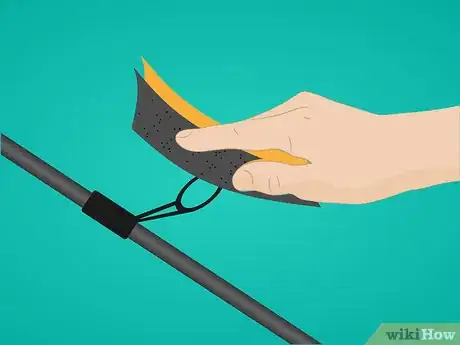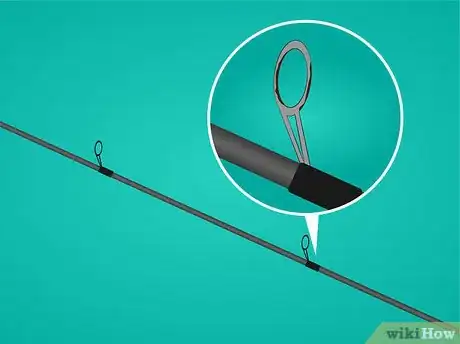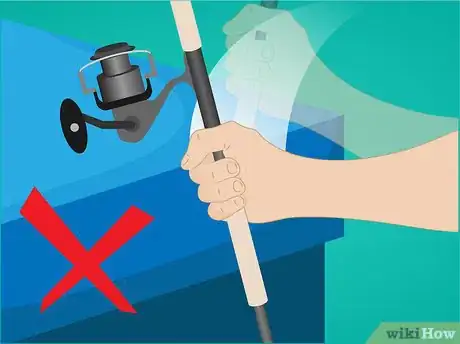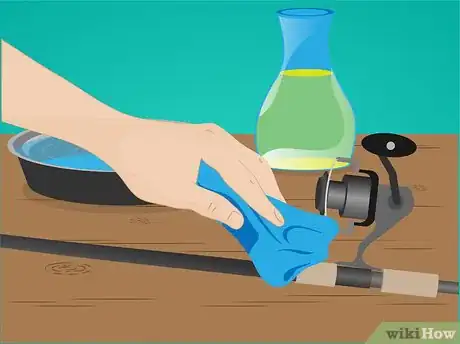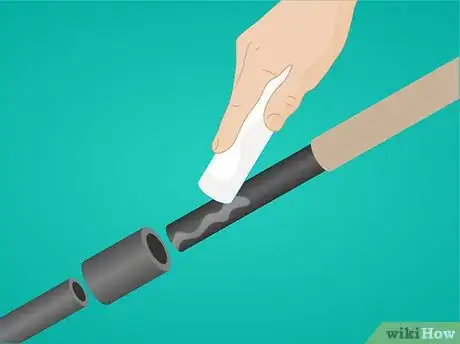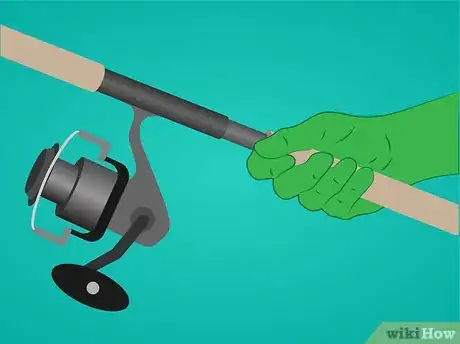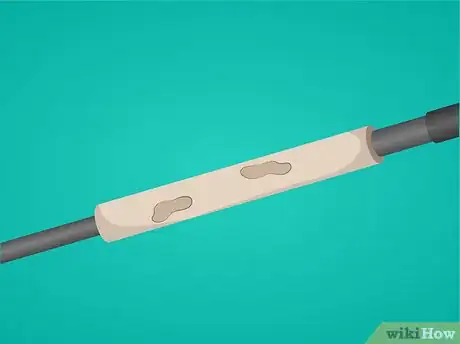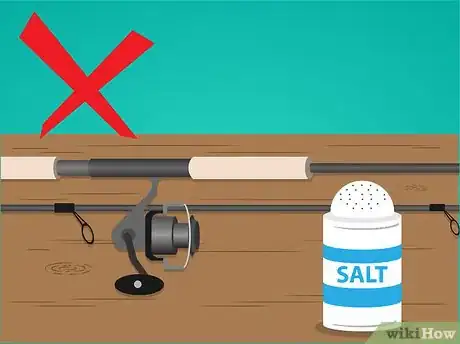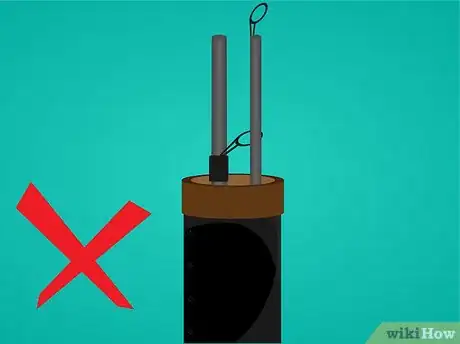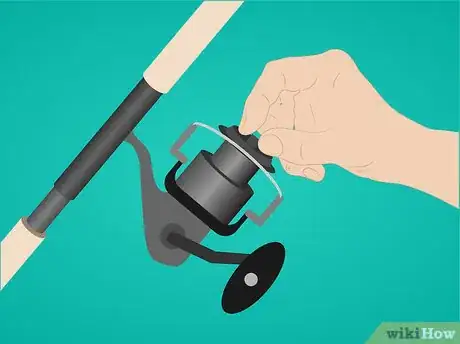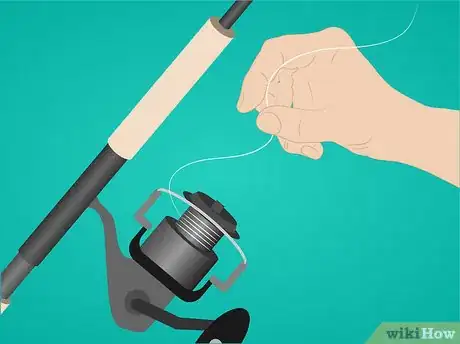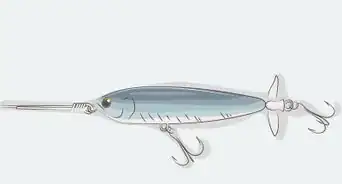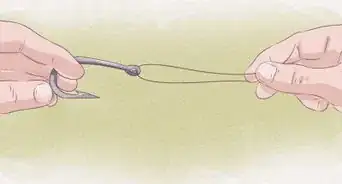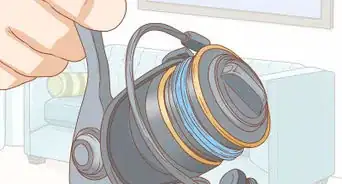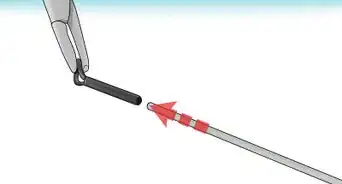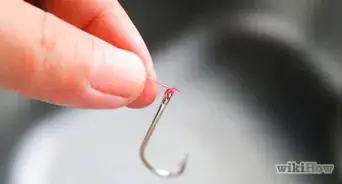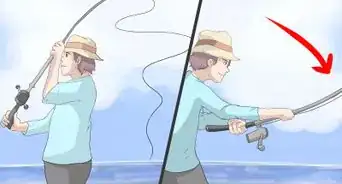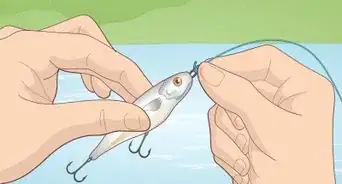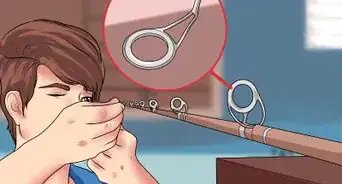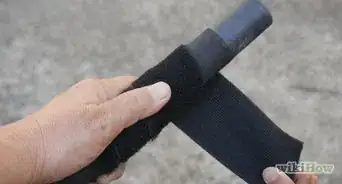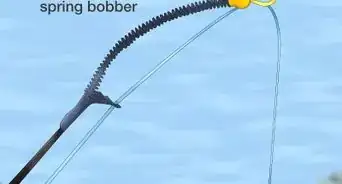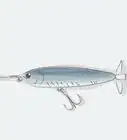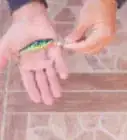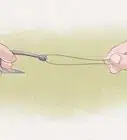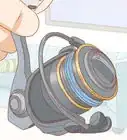X
wikiHow is a “wiki,” similar to Wikipedia, which means that many of our articles are co-written by multiple authors. To create this article, volunteer authors worked to edit and improve it over time.
This article has been viewed 70,964 times.
Learn more...
Most graphite, carbon fiber, or fiberglass fishing rods are so strong you can fight a big fish with a light rod, but so fragile a nick can lead to breakage. If you know how to maintain a fishing rod, you can extend the life of your rod, keep the fishing line from breaking mid-fight, and keep the rod's performance at the optimal level.
Steps
Method 1
Method 1 of 2:
Maintaining the Rod
-
1Fish with the guides aligned to reduce wear on your line. The guides are the metal rings that hold the line to the rod.
- Sand nicks in guide rings to prevent the line from breaking when you have a fish on. If you cannot get the nick out by sanding with fine sandpaper, replace the guide. Examine the guides with a magnifying glass and pass a cotton ball through the rings. Cotton will catch if there is a nick you cannot see with a magnifying glass.
- Check for rust on the guide rings and the reel seat -- where the reel attaches. If there is rust, replace the guide ring. Sand rust off the reel seat with fine sandpaper and repaint.
-
2Avoid banging your rod on the boat, rocks or other surfaces. Rods are relatively fragile, and even small nicks or scratches can result in breakage.[1]Advertisement
-
3Clean your rod with a cloth, lukewarm water and vinegar or mild detergent every time you finish fishing. If your rod is soiled, remove the dirt with a soft-bristle brush or a toothbrush. Allow the rod to dry completely before putting it away.[2]
- Take extra care to clean your angling rod if you have been fishing in saltwater, as there is a higher chance of corrosion.
-
4Rub the rod's joints with candle wax or paraffin to prevent friction. The joints, also known as ferrules, are the places where the separate sections of the rod join.[3]
-
5Wear gloves while you fish if your rod has a cork handle. Oils in your skin may cause the cork to wear out sooner.
- If your cork handle is already worn, wet the rod grip and sand the cork grip with fine, waterproof sandpaper. Then, put some soap on the sandpaper and gently rub the cork. Rinse off the soap and let the grip dry. Be careful not to rub the rod itself with the sandpaper.
-
6Fill small holes with a mixture of cork filings and wood glue or wood putty.
Advertisement
Method 2
Method 2 of 2:
Storing the Rod
-
1Store your rod on a rod rack that can be mounted vertically or horizontally. Storing a rod improperly may result in damage or curvature. If you do not have a rack, store the rod on a hanger or nail in a closet.[4]
- Keep your rod and reel away from salt, dirt and other substances that may harm the rod, both while fishing and while storing the rod.
- It is better not to store your rod in a rod tube, as tubes trap moisture, which can corrode the guide rings, the reel or the reel seat.
-
2Loosen the drag before storing your rod and reel so the line does not break or pull on the rod.[5]
-
3Remove the fishing line from your rod and reel before storage if you have been fishing in saltwater.
Advertisement
Community Q&A
-
QuestionHow do I tie a fishing rod for saltwater?
 Community AnswerA palomar knot is the simplest knot that I know that is strong enough to handle saltwater fish. To tie a palomar, you take the line and make about a 10 cm. loop. Thread it through the eye of the hook or lure and then make an overhand knot. Finally, pass the loop over the hook or lure.
Community AnswerA palomar knot is the simplest knot that I know that is strong enough to handle saltwater fish. To tie a palomar, you take the line and make about a 10 cm. loop. Thread it through the eye of the hook or lure and then make an overhand knot. Finally, pass the loop over the hook or lure. -
QuestionHow do I pack up my rod when I'm done fishing? What do I do with my hook?
 WikiaWangTop AnswererWhen you're done fishing, hang your hook to one of the circular latches on your fishing rod, or the holes that keep your string in place. That way, the hook won't swing around like crazy and will help maintain it. When done fishing, lean your rod against a wall; if you're moving or traveling with the rod, put bubble wrap around it and put it in a case if you can.
WikiaWangTop AnswererWhen you're done fishing, hang your hook to one of the circular latches on your fishing rod, or the holes that keep your string in place. That way, the hook won't swing around like crazy and will help maintain it. When done fishing, lean your rod against a wall; if you're moving or traveling with the rod, put bubble wrap around it and put it in a case if you can.
Advertisement
Warnings
- Take care not to jerk the rod at a sharp angle even if you have a big fish. A rod can break even if it is bent just 90 degrees.⧼thumbs_response⧽
Advertisement
References
- ↑ http://fishingnoob.com/219/how-to-care-for-and-clean-your-fishing-rod/
- ↑ http://fishingnoob.com/219/how-to-care-for-and-clean-your-fishing-rod/
- ↑ https://ilovefishing.com.au/2017/06/14/rod-reel-cleaning-maintenance/
- ↑ https://safariors.com/maintain-your-fishing-rod-reel/
- ↑ https://safariors.com/maintain-your-fishing-rod-reel/
About This Article
Advertisement
